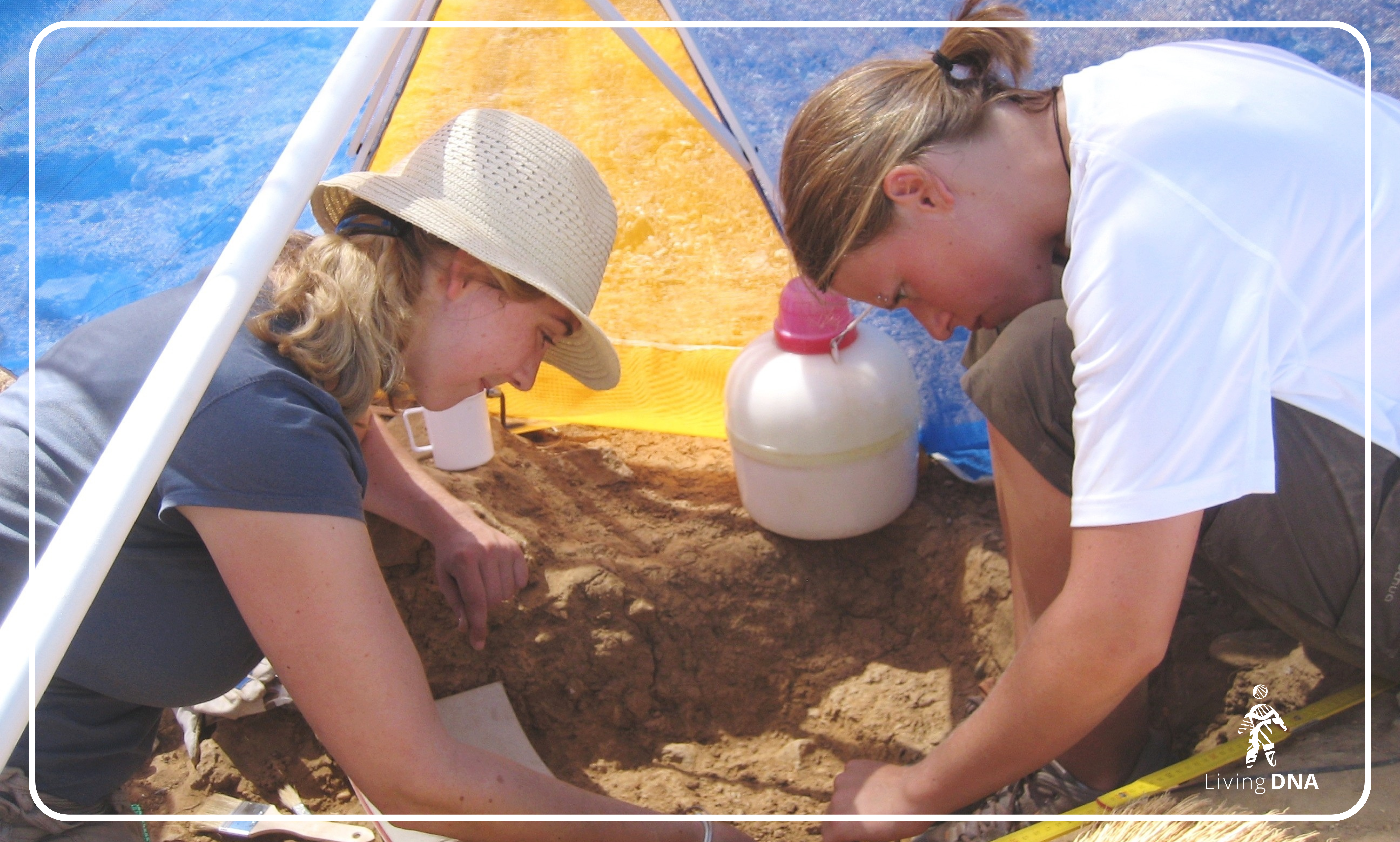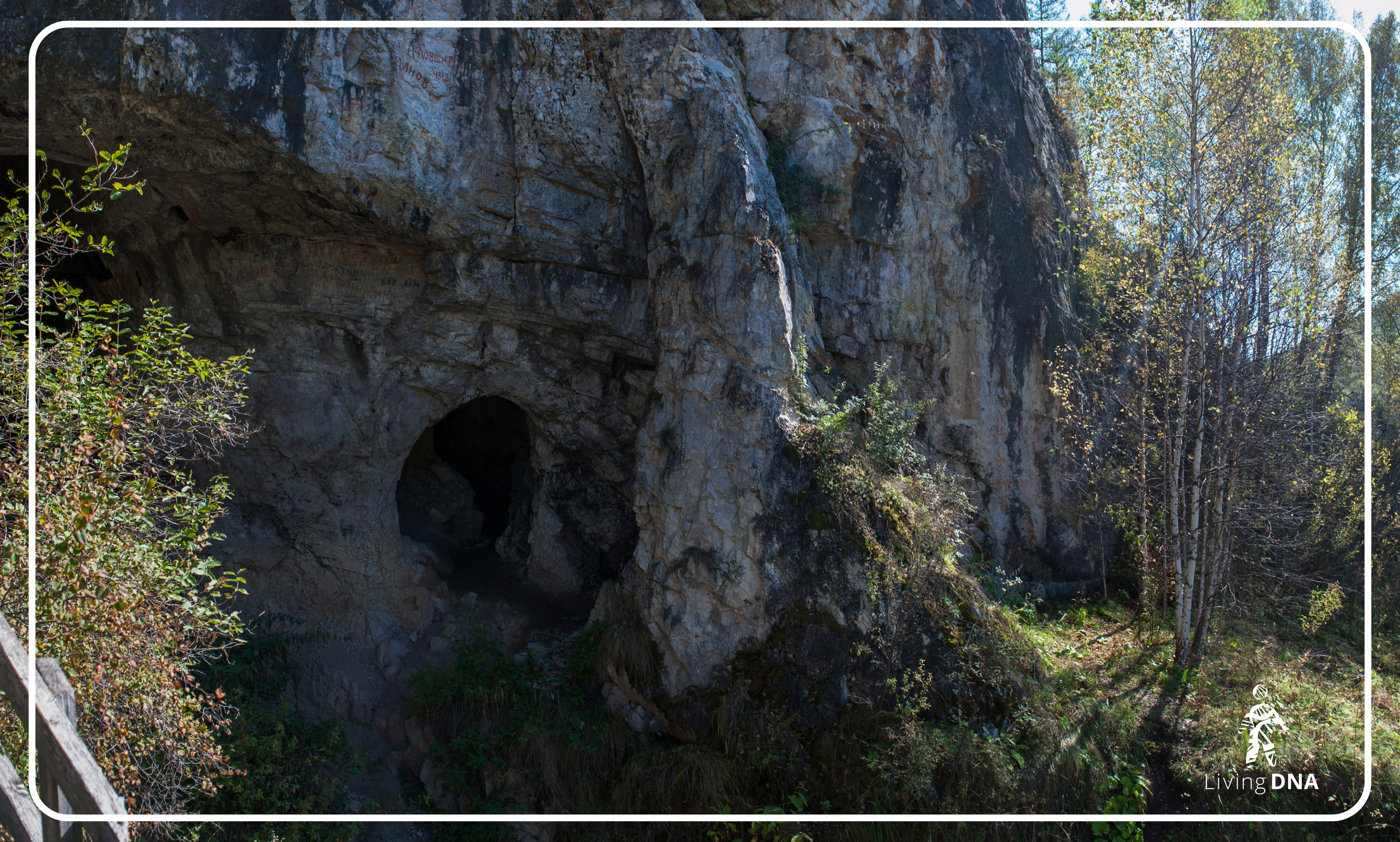In 2025, archaeology and genetics are working hand in hand to bring three ancient faces into focus. From playful art to cutting-edge DNA analysis, we're meeting our ancestors more intimately than ever before. Not just as data points, but as people who smiled and laughed, crinkled at the eyes, and played with their children. Here's how three very different discoveries are helping us to meet our ancestors. Face-to-face.
Painted Pebble or Prehistoric Portrait?
In 2022, on the outskirts of Segovia, Spain, archeologists uncovered a small, weathered pebble. Its naturally occurring grooves were arranged just precisely so. Two hollows suggest a pair of eyes. A faint crease hints at a mouth. And right at the centre, a red dot of ochre was placed exactly where a nose would be.
Most striking of all? Pressed into that red dot are the unmistakable lines and grooves of an ancient fingerprint, left there by a Neanderthal who held this stone tens of thousands of years ago.
Dated to around 43,000 years old, the find is being hailed as one of the earliest human “portraits” - not a literal drawing, but a moment where someone clearly saw a face and chose to engage with it. Was it deliberate art? Was it a moment of play? Or was it an intersection of both? Either way, it tells us something wonderfully human: that Neanderthals saw faces in the world around them - something we Homo Sapiens still do today through the phenomenon of pareidolia, seeing faces in electrical sockets or patterns - and felt moved to leave their mark.
A Mesolithic Life Reconstructed
Staying in Europe, just a stone’s throw away (if you’ll excuse the pun) in Belgium, another ancient face has returned. This time, it’s through meticulous scientific reconstruction.
The Woman of Margaux was buried in what is now Belgium more than 10,000 years ago, and has recently been reconstructed by researchers at Ghent University using a combination of CT scans and DNA.

She was somewhere between 35 and 60 years old when she died, and genetically linked to Western Hunter-Gatherers like Britain’s famous Cheddar Man, who was discovered over 100 years ago, just 40 minutes from Living DNA’s head office.
Cheddar Man’s DNA, analysed in 2018, suggests he had a dark skin tone - more like what we now see in some sub-Saharan African populations - and blue-green eyes.
The Woman of Margaux’s DNA suggests she had the same blue eyes, but her skin was probably lighter than Cheddar Man, and in fact lighter than most of the Mesolithic people from Western Europe that have been studied so far. It's a reminder that early Europeans didn’t look like a single group, but were as diverse and dynamic as any people are today.
This mix of familiarity and individuality makes her one of the most vivid windows into post-Ice Age Europe we’ve ever had. And once again, it’s her face - carefully reconstructed - that makes her feel so real, so relatable, and most of all, so human.
A Denisovan Face, At Last
In northeast China, the massive skull of Homo longi (nicknamed Dragon Man) has been a bit of a puzzle since it was unearthed. Where did he fit on our family tree? Could he represent a new species of human?
In June 2025, researchers announced a breakthrough: they had successfully extracted mitochondrial DNA directly from dental calculus (otherwise known as tartar, a kind of hardened dental plaque) on the skull. The results show that Dragon Man had Denisovan DNA.
That matters more than it might sound. Until now, Denisovans have been a bit of a ghost population, known only from DNA in our modern genomes and a handful of bone fragments from Siberia and Tibet. But this skull finally gives us a face to go with the Denisovan name. One with a magic combination of confirmed Denisovan DNA, preserved facial features, and geographic context.

The Dragon Man discovery doesn’t just expand the Denisovan story, it puts them front and centre in East Asia’s human history, and gives us our first real chance to visualise one of them.
Why We Keep Looking At Faces
Whether it’s a whimsical ochre dot on a pebble, a full facial reconstruction using mesolithic DNA, or a Denisovan skull speaking up after 100,000 years, these discoveries all have one thing in common: they all give us faces from the past.
Faces make the distant past seem closer, more personal, bridging the gap between “them” and “us”, and turning ancient data into something we can look at and connect with.
We believe that DNA is more than just your ancestry. It can help us to understand modern humans’ part in the whole of human history. The stories in your own DNA report may not go back as far as Neanderthals and Denisovans, but they do reveal how you fit into the bigger picture. And if a single fingerprint, a single bone, or a strand of DNA can bring an ancestor back to life, imagine what your own test might reveal.
Image Attribution
* Image from More than a fingerprint on a pebble: A pigment-marked object from San Lázaro rock-shelter in the context of Neanderthal symbolic behavior used under Creative Commons Attribution 4.0 International License
** Image by Allan Henderson, originally published on Wikimedia Commons: https://commons.wikimedia.org/wiki/File:Cheddar_Man,_National_History_Museum,_London.jpg. Licensed under Creative Commons Attribution-Share Alike 4.0 International (CC BY-SA 4.0): https://creativecommons.org/licenses/by-sa/4.0/.
***Image by Xijun Ni, originally published on Wikimedia Commons: https://commons.wikimedia.org/wiki/File:Homo_longi_holotype.jpg. Licensed under Creative Commons Attribution 4.0 International (CC BY 4.0): https://creativecommons.org/licenses/by/4.0/.
